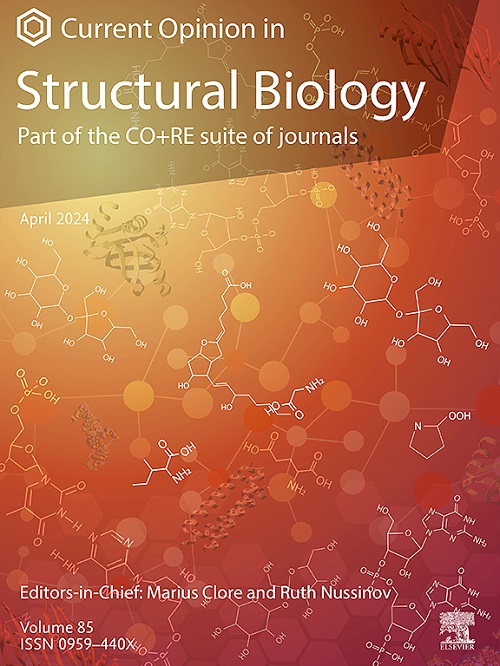Illuminating ubiquitination mechanisms: How cryo-EM has shed light on Cullin RING E3 ligase function
IF 6.1
2区 生物学
Q1 BIOCHEMISTRY & MOLECULAR BIOLOGY
引用次数: 0
Abstract
The ubiquitin-proteasome system (UPS) governs protein homeostasis by orchestrating the selective degradation of regulatory and misfolded proteins through a tightly regulated series of ATP-driven ubiquitination reactions. E3 ubiquitin ligases play a central role in this process by conferring substrate specificity, yet the structural complexity and dynamic nature of these large macromolecular assemblies poses challenges for traditional structural biology techniques such as X-ray crystallography and nuclear magnetic resonance (NMR). The advent of single-particle cryo-electron microscopy (cryo-EM) has transformed our ability to study these enzymes, revealing previously inaccessible mechanistic insights into their allosteric regulation, conformational transitions, and substrate recognition. By integrating high-resolution crystallographic data with cryo-EM's ability to resolve heterogeneous and dynamic complexes, researchers have uncovered fundamental principles governing E3 ligase activity. This review explores how cryo-EM has reshaped our understanding of Ligases. We highlight key discoveries enabled by this technique, and discuss how emerging cryo-EM approaches, alongside complementary methodologies, are advancing therapeutic strategies targeting ubiquitin signaling by this family of ligases.
阐明泛素化机制:低温电镜如何揭示Cullin RING E3连接酶的功能
泛素-蛋白酶体系统(UPS)通过一系列严格调控的atp驱动的泛素化反应,通过调控和错误折叠蛋白的选择性降解来控制蛋白质的稳态。E3泛素连接酶通过赋予底物特异性在这一过程中发挥核心作用,然而这些大分子组装的结构复杂性和动态性质对传统的结构生物学技术(如x射线晶体学和核磁共振)提出了挑战。单粒子低温电子显微镜(cryo-EM)的出现改变了我们研究这些酶的能力,揭示了以前无法获得的对它们的变构调节、构象转变和底物识别的机制见解。通过将高分辨率晶体学数据与cryo-EM解析异质和动态复合物的能力相结合,研究人员发现了E3连接酶活性的基本原理。这篇综述探讨了低温电镜如何重塑我们对连接酶的理解。我们强调了这项技术的关键发现,并讨论了新兴的冷冻电镜方法,以及互补的方法,是如何推进针对泛素信号的治疗策略的。
本文章由计算机程序翻译,如有差异,请以英文原文为准。
求助全文
约1分钟内获得全文
求助全文
来源期刊

Current opinion in structural biology
生物-生化与分子生物学
CiteScore
12.20
自引率
2.90%
发文量
179
审稿时长
6-12 weeks
期刊介绍:
Current Opinion in Structural Biology (COSB) aims to stimulate scientifically grounded, interdisciplinary, multi-scale debate and exchange of ideas. It contains polished, concise and timely reviews and opinions, with particular emphasis on those articles published in the past two years. In addition to describing recent trends, the authors are encouraged to give their subjective opinion of the topics discussed.
In COSB, we help the reader by providing in a systematic manner:
1. The views of experts on current advances in their field in a clear and readable form.
2. Evaluations of the most interesting papers, annotated by experts, from the great wealth of original publications.
[...]
The subject of Structural Biology is divided into twelve themed sections, each of which is reviewed once a year. Each issue contains two sections, and the amount of space devoted to each section is related to its importance.
-Folding and Binding-
Nucleic acids and their protein complexes-
Macromolecular Machines-
Theory and Simulation-
Sequences and Topology-
New constructs and expression of proteins-
Membranes-
Engineering and Design-
Carbohydrate-protein interactions and glycosylation-
Biophysical and molecular biological methods-
Multi-protein assemblies in signalling-
Catalysis and Regulation
 求助内容:
求助内容: 应助结果提醒方式:
应助结果提醒方式:


